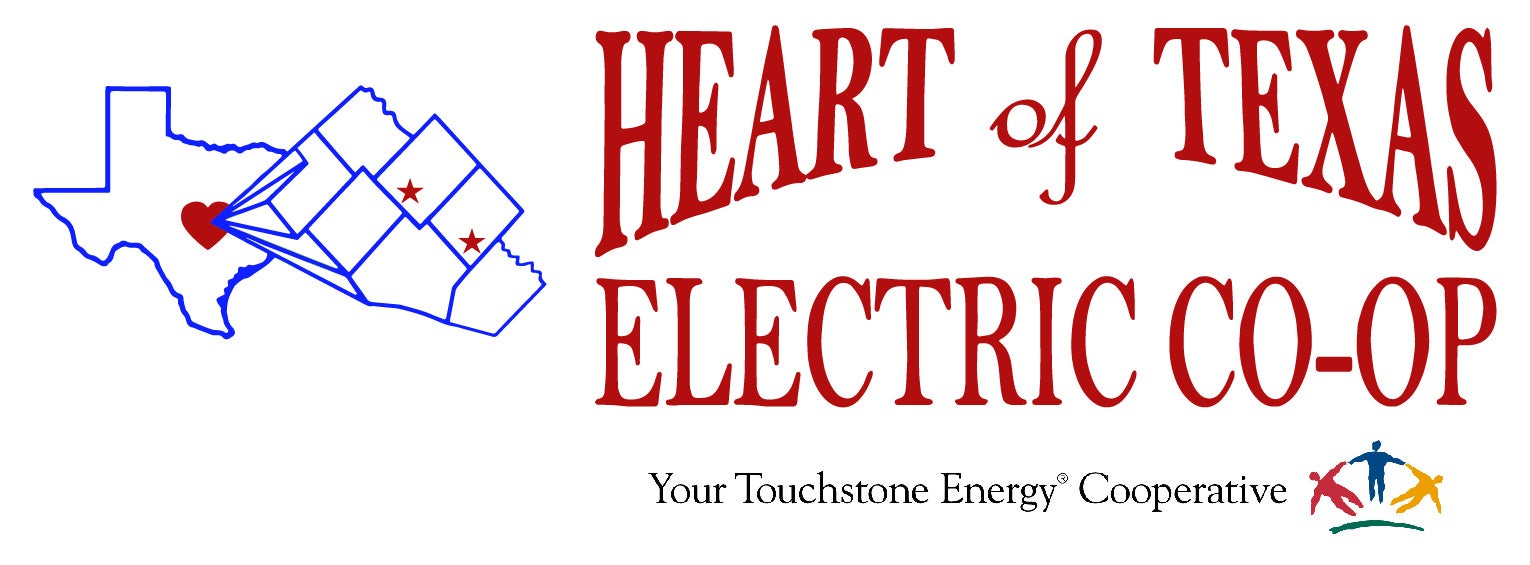Heart of Texas Electric Cooperative Inc. was incorporated in 1937 to provide electricity to rural areas of Central Texas. The co-op has over 18,000 members and over 23,000 meters served by nearly 4,000 miles of line.
The co-op's service area spans seven counties including parts of Bell, Bosque, Coryell, Falls, Hamilton, McLennan and Milam counties.
In order to receive electricity, a person must join the cooperative, which makes the person a member/owner. The member/owners elect a board from the general membership which sets policy and hires a General Manager to operate the business. Three directors are elected each year on a rotating basis.
The co-op employs over 60 people in three departments - Operations, Administrative Services, and Member Services.
On July 1, 2007, members of McLennan County Electric Cooperative and Belfalls Electric Cooperative voted to consolidate operations, resulting in a new cooperative called Heart of Texas Electric Cooperative Inc.

Cooperatives around the world operate according to the same set of core principles and values, adopted by the International Cooperative Alliance. Cooperatives trace the roots of these principles to the first modern cooperative founded in Rochdale, England in 1844. These principles are a key reason America’s electric cooperatives operate differently from other electric utilities, putting the needs of their members first.
Membership in a cooperative is open to all people who can reasonably use its services and stand willing to accept the responsibilities of membership, regardless of race, religion, gender, or economic circumstances.
Cooperatives are democratic organizations controlled by their members, who actively participate in setting policies and making decisions. Representatives (directors/trustees) are elected among the membership and are accountable to them. In primary cooperatives, members have equal voting rights (one member, one vote); cooperatives at other levels are organized in a democratic manner.
Members contribute equitably to, and democratically control, the capital of their cooperative. At least part of that capital remains the common property of the cooperative. Members allocate surpluses for any or all of the following purposes: developing the cooperative; setting up reserves; benefiting members in proportion to their transactions with the cooperative; and supporting other activities approved by the membership.
Cooperatives are autonomous, self-help organizations controlled by their members. If they enter into agreements with other organizations, including governments, or raise capital from external sources, they do so on terms that ensure democratic control as well as their unique identity.
Education and training for members, elected representatives (directors/trustees), CEOs, and employees help them effectively contribute to the development of their cooperatives. Communications about the nature and benefits of cooperatives, particularly with the general public and opinion leaders, help boost cooperative understanding.
By working together through local, national, regional and international structures, cooperatives improve services, bolster local economies, and deal more effectively with social and community needs.
Cooperatives work for the sustainable development of their communities through policies supported by the membership.
Heart of Texas At-A-Glance
18086
The Cooperative has a membership base that exceeds 18,000
23476
Ever-growing, we service more than 23,000 meters
3945
...and we continue to build line as we near 4,000 miles
